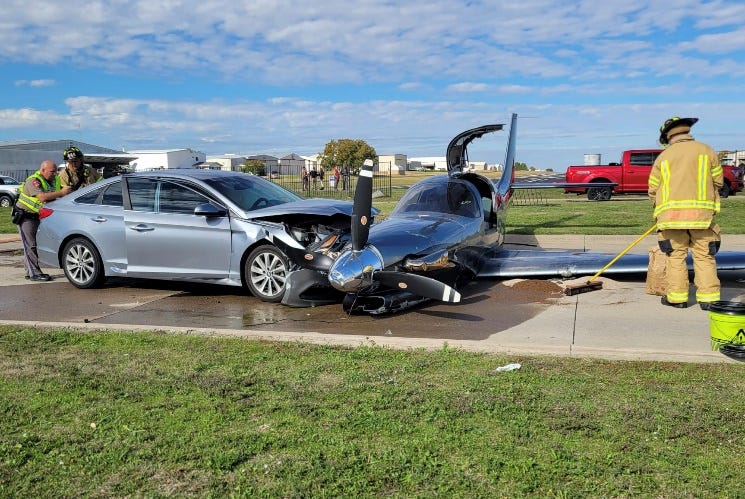
It was shortly after noon Saturday when a pilot flying an experimental built Lancair Turbo-Prop from Midland heading to McKinney started having problems.
Upon reaching a cruising altitude of 25,000 feet, they experienced pressurization problems causing them to do a rapid descent, dropping 15,000 feet in six minutes. After leveling off at 10-thousand feet and likely taking a deep breath, they continued to McKinney.
An aircraft rapidly descending can get a little bumpy. The roar of air outside will get much louder as the aircraft descends at the maximum safe airspeed it can maintain. Painful ear popping is common.
Then while making an emergency landing at Aero Country Airport, the pilot was unable to stop the plane at the end of the runway. It bounced through a fence and onto eastbound Virginia Parkway, where it collided into a car driving by the airport.
According to the McKinney Fire Department, paramedics evaluated three patients at the scene. Two were on the plane and one was in the car. One person was transported to the hospital with minor injuries.
Meanwhile, the Federal Aviation Administration investigation into the incident caused Virginia Parkway to be closed for hours. The FAA and the National Transportation Safety Board (NTSB) will be looking at where and what speed the aircraft first touched down on the 3,600 foot runway.
Also, what effect the earlier in flight rapid decent maneuver had on the aircraft and crew leading up to the crash landing.
High performance aircraft like the one involved in this crash have autopilot systems. An autopilot coupled with an Automatic Emergency Descent System, monitoring for altitude and any cabin depressurization, can trigger the autopilot to rapidly descend to a safe altitude, even if the pilots have lost consciousness.
Studies by FAA and the National Transportation Safety Board (NTSB) show that amateur-built/homebuilt aircraft have an accident rate less than one percentage point higher than the general aviation fleet.
